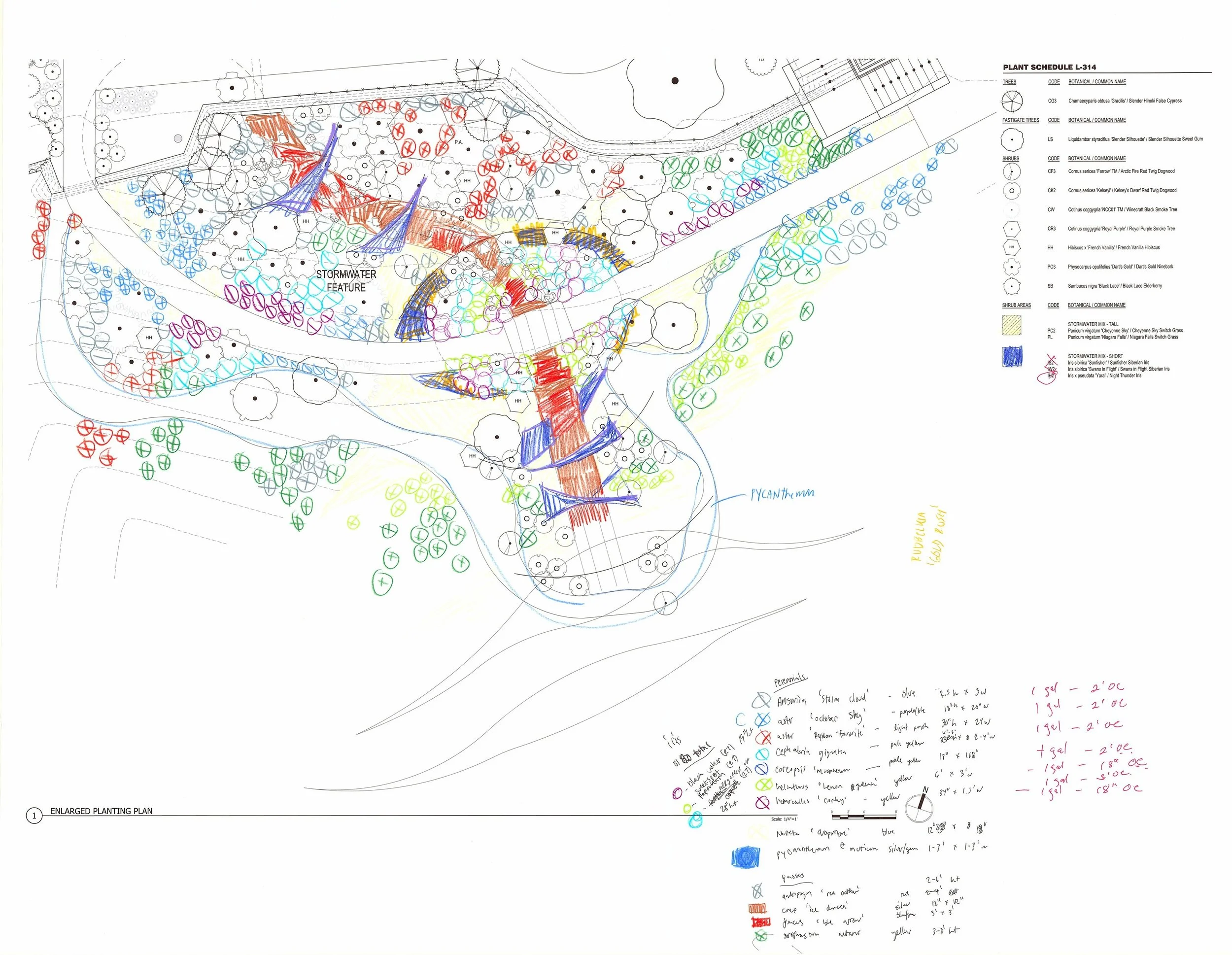Teaching Gardens
A botanic garden is a place set aside for the collection, cultivation, and study of plants, serving a variety of scientific, educational, and aesthetic purposes.
The fireside terrace and pavilion at Leach Botanical Garden provide spaces for teaching visitors about the site’s plants and ecosystems.
Botanic gardens lend themselves to teaching because of their inherent relationship to the land and plants, locations based in populated areas, expert staff, and institutional memory. As Land Morphology develops new gardens for our botanic garden clients, we see these new spaces as a chance to engage communities, improve ecological resilience, and further the sharing of horticultural knowledge.
This does not only mean creating formal educational spaces like classrooms, but using the whole site to create flexible opportunities for learners to experience with all the senses, explore new places, and develop connections to the environment.
The Treewalk at Leach Botanical Garden offers an immersive experience for visitors and new opportunities for learning about and experiencing the Pacific Northwest native forest.
Botanic Gardens are a source of inspiration for gardeners and visitors of all ages, so the potential to demonstrate learning opportunities is crucial for us.
Our design for the edible garden at JC Raulston Arboretum incorporated gathering areas and teaching spaces for sharing experiences and knowledge.
Yew Dell Botanic Garden Case Study
For the Yew Dell Botanic Gardens project, we drew upon the garden’s mission “to spark a passion for plants and gardening through accessible science and inspiring beauty” when started our design process.
Design Process
Initially, we began by facilitating workshops with the garden staff and design board to learn which environmental education strategies, programs, and initiatives that they want to create spaces for.
Secondly, we asked ourselves what current problematic or exemplary features exist on the site.
Thirdly, during the design process, we created integrated solutions for new destinations that will allow visitors to engage with their surroundings. Yew Dell already has an existing greenhouse, pavilion, and other formal learning centers, so within our scope of work we aimed our focus towards educational garden spaces that create engagement around water, conservation, ecological, and horticultural plantings.
One of the key moments in our design at Yew Dell Botanic Gardens occurred during an initial site visit and talking with the staff about the Castle building. The former pool house was built exactly where most of the site's water was flowing, which caused seasonal flooding of the structure. As it is one of the most iconic buildings on site and a central focus of this phase of development, we had the chance to use the problem to create an educational solution.
This came prior to witnessing the flooding events of 2022 that displayed the significant impact water can have in many regions of the United States. Although the context is different at Yew Dell Gardens, the ideas and techniques are not exclusive to gardens. The educational and interactive design features of this renovated area will include planted swales, artfully designed check dams, and planting that works with wet and dry soils. The walkways are ADA accessible by all.
For the stormwater garden to be successful, the space has to be functional before anything else. The design includes adaptive planting, bioswales, weirs, and an artful water dispersion feature. As seen in the initial planting design above, the forms, colors, textures, and unique plants will invite visitors of all ages to connect with the feature in any season.
Especially after rain events, the stormwater garden will create an amazing learning experience for all to observe and watch the water move through the site.






